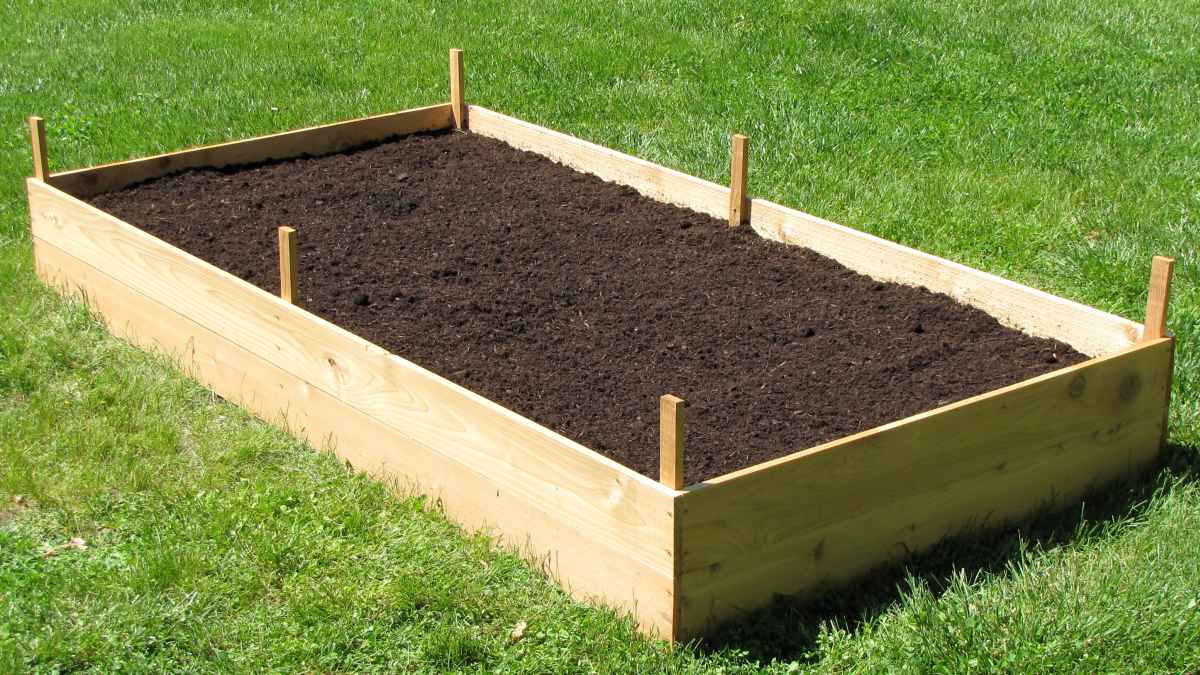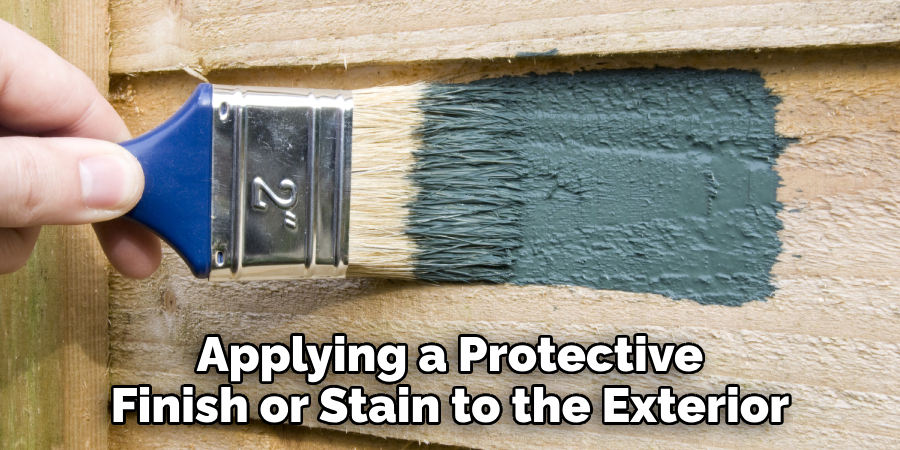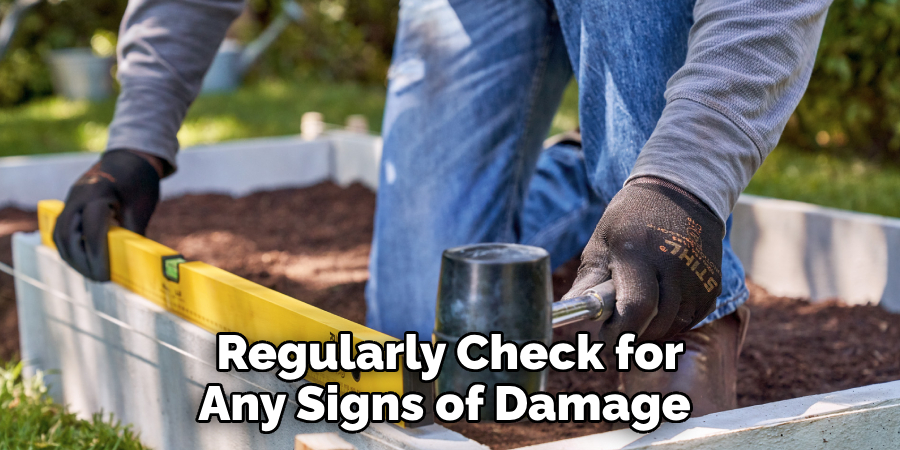To build a cedar garden bed, start by choosing the desired location and size. Then, gather cedar boards, cut them to the appropriate lengths, and use screws to secure the boards together in a rectangular shape.
Add corner brackets for extra stability if desired and fill the bed with soil.

Credit: dengarden.com
How to Build a Cedar Garden Bed: Step by Step Guidelines
Choosing The Right Cedar Wood For Your Garden Bed
Choosing the right cedar wood for your garden bed is essential for successful gardening. Cedar wood offers several benefits that make it a popular choice for garden beds. One of the main advantages is its natural resistance to decay, making it a durable and long-lasting option.
Additionally, cedar wood contains natural oils that act as insect repellents, protecting your plants from harmful pests. Moreover, cedar has a beautiful natural color and a pleasant aroma that adds visual appeal to your garden. When it comes to different types of cedar wood, western red cedar and eastern red cedar are commonly used for garden beds.
Both options offer excellent durability and resistance to rot. By selecting the appropriate cedar wood, you can ensure the longevity and overall success of your garden bed.
Preparing The Ground For Your Garden Bed
Select a suitable location for your garden bed by considering factors such as sunlight and soil quality. Begin preparing the ground by clearing the area of any existing plants or debris. This will ensure a clean and fresh start for your garden bed.
Once cleared, it’s important to level the ground to provide a sturdy foundation. Ensuring an even and flat surface will help to prevent any issues with stability. By following these steps, you’ll be well on your way to building a durable cedar garden bed that will thrive in its new environment.
So, take your time and give your garden bed the proper groundwork it needs for a successful garden.
Building The Frame For Your Garden Bed
Building the frame for your garden bed starts with measuring and marking the dimensions. Choose the appropriate height and width based on your specific needs. Cut the cedar wood to size, ensuring precision for a sturdy frame. Assemble the frame using screws or nails, securing each corner for added stability.
This process provides a solid foundation for your garden bed, ensuring that it can withstand the weight of the soil and plants. Whether you are a gardening enthusiast or a beginner, building a cedar garden bed is a rewarding and enjoyable project.
Follow these steps to create a beautiful and functional addition to your outdoor space.
Adding Support To The Garden Bed
Building a stable cedar garden bed requires adding support to ensure its durability. One way to achieve this is by installing corner braces, which provide added stability to the overall structure. These braces can be secured at each corner of the raised bed, reinforcing the joints and preventing any potential wobbling or shifting.
Additionally, for longer garden beds, it is recommended to include a center support beam. This beam should be placed in the middle of the garden bed, extending from one end to the other, in order to distribute the weight evenly and prevent sagging.
By following these steps, you can ensure that your cedar garden bed remains strong and sturdy, providing the perfect foundation for healthy plant growth.
Lining The Garden Bed
Options for lining the interior of a cedar garden bed include using a weed barrier or landscaping fabric. These choices offer numerous benefits, such as preventing weed growth and protecting the wood from moisture damage. To ensure the liner stays in place and doesn’t shift, it’s crucial to properly secure it.
This can be done by using staples or securing pins to anchor the barrier or fabric to the bed. By taking the time to carefully line the garden bed, you can create a sturdy and long-lasting structure for your plants.
So, whether you opt for a weed barrier or landscaping fabric, remember to secure it well to enjoy a weed-free and well-maintained garden bed.
Filling The Garden Bed With Soil
To create a cedar garden bed, it’s important to carefully choose the soil mix. Start by incorporating compost and organic matter to enrich the soil with nutrients. This will provide a healthy foundation for your plants. Once the soil is prepared, level it out and lightly compact it to create an even surface for planting.
Avoid common phrases like “when it comes to” and “if you” to keep the writing engaging. Remember to keep the sentences under 20 words for better readability. So, follow these steps for filling your garden bed with the right soil mix and get ready for a flourishing garden.
Planting And Maintaining Your Garden Bed
Building a cedar garden bed is an excellent way to grow your own plants and vegetables. When it comes to choosing the plants or seeds to grow, select varieties that thrive in your climate and suit your preferences. Proper spacing and arrangement of plants is crucial for their healthy growth and development.
Ensure you provide enough room between each plant to prevent overcrowding. Watering, fertilizing, and monitoring the garden bed are essential tasks to maintain a thriving garden. Regularly water the plants, use organic fertilizers, and keep an eye out for any signs of pests or diseases.
Implement pest control measures promptly to protect your plants. Regular maintenance, such as removing weeds and dead plants, is necessary to keep your garden bed in top shape. By following these guidelines, you can create a stunning cedar garden bed that will yield a bountiful harvest.
Enhancing The Appearance And Longevity Of Your Garden Bed
Enhance the appearance and longevity of your garden bed by applying a protective finish or stain to the exterior. Protecting the wood from weather damage and decay will ensure a longer lifespan. Consider adding decorative elements, such as trellises or plant markers, to add a personal touch and make your garden bed stand out.

Remember to perform spring and fall maintenance to keep your garden bed in peak condition. Clear away debris, trim overgrown plants, and check for any signs of damage. By following these maintenance tips, you can extend the lifespan of your garden bed and enjoy a beautiful and productive garden for years to come.
Frequently Asked Questions Of How To Build A Cedar Garden Bed
What Are The Benefits Of Building A Cedar Garden Bed?
Building a cedar garden bed offers several benefits. Cedar wood is naturally resistant to decay and insect damage, ensuring the longevity of your garden bed. It also provides a beautiful and aromatic addition to your garden, and its natural oils help deter pests.
Additionally, cedar is a sustainable and eco-friendly choice for gardeners.
How Do I Choose The Right Size For My Cedar Garden Bed?
When choosing the size of your cedar garden bed, consider the available space in your garden, the types and quantities of plants you wish to grow, and your own gardening preferences. It’s generally recommended to keep the width of the bed around 3 to 4 feet, allowing easy access from both sides.
The length can vary based on your available space and desired growing area.
What Type Of Soil Should I Use In My Cedar Garden Bed?
For optimal plant growth, it’s essential to use a well-draining and nutrient-rich soil mix in your cedar garden bed. A mix of garden soil, compost, and organic matter like peat moss or coconut coir is commonly used. This combination provides good drainage while retaining enough moisture and nutrients for your plants to thrive.
How Do I Protect My Cedar Garden Bed From Pests And Rot?
To protect your cedar garden bed from pests, you can line the bottom with hardware cloth or mesh to prevent animals from burrowing into the bed. Applying a natural and non-toxic pest repellent, such as neem oil or diatomaceous earth, can further deter pests.
To prevent rot, ensure proper drainage by using gravel or a drainage layer at the bottom of your bed.
How Should I Maintain My Cedar Garden Bed?
To maintain your cedar garden bed, regularly check for any signs of damage or rot and promptly address any issues. Apply a protective stain or sealant every few years to prolong its lifespan and retain its natural color. It’s also important to regularly weed, water, and fertilize your plants to keep your garden bed healthy and thriving.

Can I Grow Any Plant In A Cedar Garden Bed?
Cedar garden beds are versatile and suitable for growing various plants, including flowers, herbs, vegetables, and small shrubs. However, consider the specific needs and preferences of each plant when choosing what to grow. Some plants may require specific soil conditions, sunlight, or spacing, so it’s important to research and plan accordingly before making your planting choices.
Conclusion
Building a cedar garden bed is a rewarding and sustainable way to enhance your gardening experience. From selecting the right materials to measuring and assembling, this step-by-step guide has provided you with all the necessary information to get started. By opting for cedar, you ensure durability, resistance to pests and weather, and an attractive natural appearance for your garden bed.
Whether you are a seasoned gardener or a beginner, this project is easily achievable and customizable to fit your space and needs. The benefits of a cedar garden bed extend beyond aesthetics, as it promotes healthy plant growth, efficient water drainage, and easy weed control.
By following the tips and techniques outlined in this article, you can create a thriving garden that will bring you joy for years to come. Start building your cedar garden bed today and enjoy the fruits of your labor!

